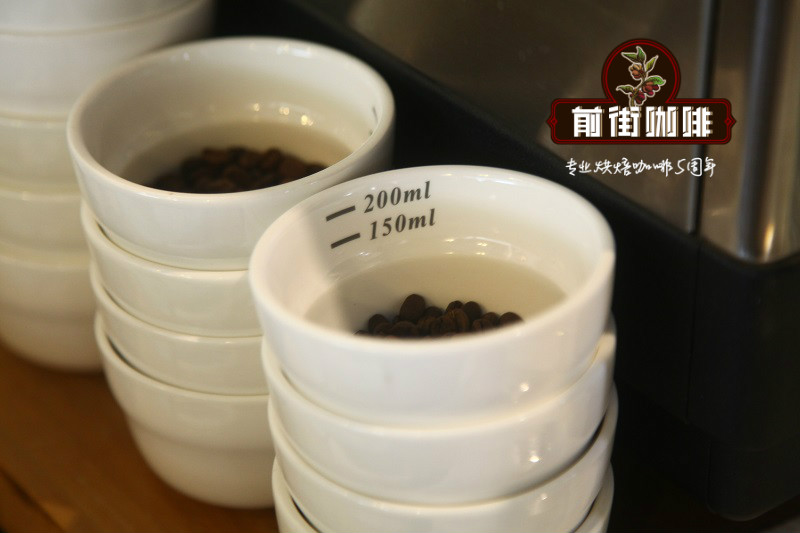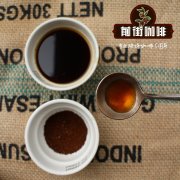San Jose, a canyon in central Costa Rica. What is the flavor of rose summer honey treatment on Donna Daisy Farm?

Professional coffee knowledge exchange more coffee bean information please follow the coffee workshop (Wechat official account cafe_style)
San Jose, a canyon in central Costa Rica. What is the flavor of rose summer honey treatment on Donna Daisy Farm?
Finca Dona Daisy Farm, located in San Jose, a canyon producing area in central Costa Rica, is 1700 meters above sea level and is owned by Pepe and Daisy Fallas, who live on the farm with their two children and grandchildren. When Pepe sent his own raw coffee beans to the ASOPROAAA Cooperative, he found that the coffee was of good quality. from then on, Pepe decided to continue to produce coffee and will expand the coffee growing area on the farm, adding Rosa and Kenya SL28 to the original Kaduai bean seed. And cooperate with ASOPROAAA to get assistance from ASOPROAAA in technology, finance and trade.
Donna Daisy Farm has been on the Has Bean bean list since last year, and it is also the first batch of raw beans officially sold at Donna Daisy Farm. Has Bean loves their coffee and is back on the Has Bean bean list this year. In particular, this rose summer is honey-treated, rarely seen in rose summer, with a blend of lime and sugar sweetness, delicate floral aromas, and citrus and orange flavors.
Costa Rica is one of the first Central American countries to introduce coffee cultivation, and the government also attaches great importance to the development of the local coffee industry, promulgating strict environmental laws and regulations to protect the precious ecosystem. Costa Rica currently has more than 50,000 coffee growers. After years of innovation, the coffee industry, which began to develop in 1779, now has a complete industrial system and produces high-quality world-class coffee. The volcanic soil of Costa Rica is very fertile and well drained, and it is tempered by Pacific and Atlantic currents and sea breezes at the same time. Coffee trees are able to grow slowly in the most fertile volcanic ash soil and cool environment at high altitude, giving birth to coffee beans with complete and rich flavor. Costa Rica has seven major coffee producing areas, of which the Midwest Valley, Central Valley and Tarazu are of the best quality and have the longest history, and have long been recognized by coffee lovers all over the world. A well-known region of Costa Rica-the western valley, with poor high temperatures and fertile soil, is very suitable for coffee cultivation.
Bean seed: rose summer Geisha
Origin: San Jose, San Jose, Central Valley, Central Canyon
Farm: Donna Daisy Farm Finca Dona Daisy
Farmer: Pepe and Daisy Fallas
Altitude: 1700 m
Treatment method: Red Honey treated with red honey
Flavor: floral fragrance, lime, sugar, citrus, orange
Qianjie recommended cooking:
Filter cup: Hario V60
Water temperature: 90 degrees
Degree of grinding: small Fuji 3.5
Cooking methods: the ratio of water to powder is 1:15, 15g powder, the first injection of 25g water, 25 s steaming, the second injection to 120g water cut off, waiting for the powder bed water to half and then water injection, slow water injection until 225g water, extraction time about 2:00
Analysis: using three-stage brewing to clarify the flavor of the front, middle and back of the coffee. Because the V60 has many ribs and the drainage speed is fast, it can prolong the extraction time when the water is cut off.
Important Notice :
前街咖啡 FrontStreet Coffee has moved to new addredd:
FrontStreet Coffee Address: 315,Donghua East Road,GuangZhou
Tel:020 38364473
- Prev

Tanzania Mbeya region| Sangura Sangura Processing Plant Washed Red Bourbon Flavor and Brewing
Professional coffee knowledge exchange More coffee bean information Please pay attention to coffee workshop (Weixin Official Accounts cafe_style) Tanzania Mbeya production area| Sangura Sangura Treatment Plant Washed Red Bourbon Flavor and Brewing Reference? Tanzanian coffee is characteristic of Central/East African washed beans with bright acidity and intense flavor. Although Kenya is known for its superior coffee,
- Next

American Blue bottle Coffee Peruvian Coffee beans Port of Mokha Coffee introduction _ how to drink Peruvian coffee beans
Professional coffee knowledge exchange more coffee bean information please follow the coffee workshop (Wechat official account cafe_style) 18 March limited release of Peruvian coffee in the United States Port of Mokha not to mention the annual boutique coffee Peruvian coffee sounds like little fame and few fans. In fact, Peru is a big coffee grower and has a good flavor. Knock on the blackboard
Related
- Detailed explanation of Jadeite planting Land in Panamanian Jadeite Manor introduction to the grading system of Jadeite competitive bidding, Red bid, Green bid and Rose Summer
- Story of Coffee planting in Brenka region of Costa Rica Stonehenge Manor anaerobic heavy honey treatment of flavor mouth
- What's on the barrel of Blue Mountain Coffee beans?
- Can American coffee also pull flowers? How to use hot American style to pull out a good-looking pattern?
- Can you make a cold extract with coffee beans? What is the right proportion for cold-extracted coffee formula?
- Indonesian PWN Gold Mandrine Coffee Origin Features Flavor How to Chong? Mandolin coffee is American.
- A brief introduction to the flavor characteristics of Brazilian yellow bourbon coffee beans
- What is the effect of different water quality on the flavor of cold-extracted coffee? What kind of water is best for brewing coffee?
- Why do you think of Rose Summer whenever you mention Panamanian coffee?
- Introduction to the characteristics of authentic blue mountain coffee bean producing areas? What is the CIB Coffee Authority in Jamaica?

